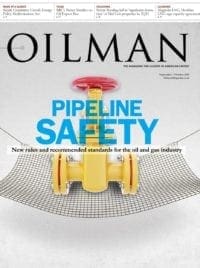The Big Data train is full and is pulling out of the station. If you hurry, the folks on the telephone tell you, you can make it! It will cost an arm and a leg to ride, charged monthly (don’t mind the conductor counting his cash). But where will this train take you? What kind of information is available to you while you are on this ride?
Big Data is kind of like the Big Box stores – great in theory, but horrible on the ground level. You have access to everything under the sun, but try to find assistance when you need it most! When you finally find what you need, did the “special promotional” period end? Do you checkout and end up paying more and more for the same items?
You aren’t alone. Customer service is becoming as common as typewriters.
The beauty of being a conductor on a constantly moving train? The landscape is always changing, and will require riders to buy more tickets. They don’t have to say thank you or care if you jump off mid-journey. This “essential” business need will continue down the track without you.
But, as a group known for dusting ourselves off and finding our own answers, we tend to find that this “necessity” is a train we don’t need to board. The majority of the data that’s needed on an M&A deal is not available in the Big Data formats. The nuts and bolts of a deal are more than likely in 8×11 legal boxes tucked away in storage.
They are in a courthouse in the middle of nowhere, or in the field, on the ground, only available by talking to the pumper. Big Data on the other hand, in its most common form, is regurgitated, readily available public information.
The best source for data has always been, and will continue to be, the people. For example, the people know the potential issues with a well bore that aren’t on any screen shots. They know the land owner and the family history with the operators in the area. While Big Data knows what wells worked, and which ones didn’t, the people surrounding an M&A deal know why.
Big Data is great if you need to funnel down well specifics, company ownership or potential sales opportunities, similar to the self-checkout at the big box stores. If you need to get in and get out, with under 10 items, they are fantastic. But if you need two weeks of food and supplies, that self-checkout becomes more of a hindrance than a help. With most M&A deals, Big Data is that unwanted self-checkout.
Someone once told me that you should never bring a problem to the table without a solution.
So what’s the solution? Hire an independent firm that can put together high quality packages that provide both the professional client relationship, as well as the built in funnel that sorts the deals that do not fit within your current business model. Independent firms are the knowledgeable consultants that can assist you through different phases of your project.
Find out what you are looking for, and find a good quality firm to work with you. You’ll be amazed at the “Big Data” you’ll come out with.
Josh Robbins is currently the Chief Executive Officer of Beachwood Marketing. He has consulted and provided solutions for several industries, however, the majority of his consulting solutions have been in manufacturing, energy and oil and gas. Mr. Robbins has over 15 years of excellent project leadership in business development and is experienced in all aspects of oil and gas acquisitions and divestitures. He has extensive business relationships with a demonstrated ability to conduct executive level negotiations. He has developed sustainable solutions, successfully marketing oil and natural gas properties cost-effectively and efficiently. Beachwood strives to partner with top tier oil and gas firms to find off-market deals that provide maximum benefit to their corporate acquisition strategy. At Beachwood, Mr. Robbins manages the corporate branding, senior staff, and the Beachwood Strategic Consulting Group, including sales strategy development for all of the Beachwood clients. Josh has been featured in numerous trade magazines as he is an accomplished writer and speaker on the acquisition and divestment market. He writes a bi-monthly acquisition and divestiture column for Oilman Magazine that has a social reach of an estimated 145,200 views per issue. The best way to reach Mr. Robbins is through email.











